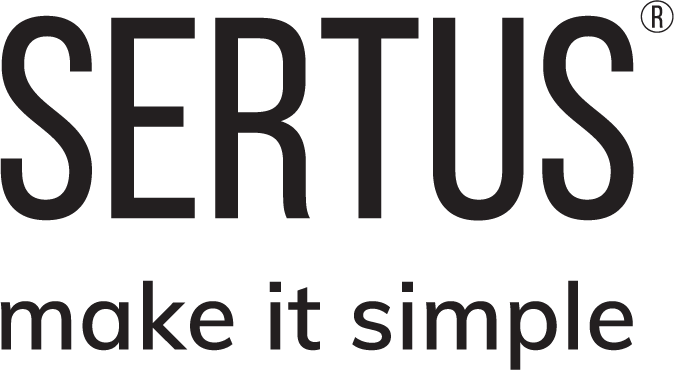Fan sets: Modular vs traditional
Smoke control is one of the most important safety elements of any building, so it’s no surprise that the field keeps innovating. Fan sets are no exception to this rule. To mark the launch of our Pod™ series of smoke extractors, we thought we’d give you a run through of the traditional fan set approach compared with the more novel, modular option, such as the Sertus Pod™ — and then help you decide which one is for you.
What are fan sets?
Fan sets are units that sit on the roof of a building to help mechanical ventilation. They extract hot gases through ductwork and smoke shafts, assisting in case of a fire. Certain fan sets can also provide environmental (day-to-day) ventilation.
How do traditional and modular fan sets compare?
Extractors come in two main categories — traditional and modular. The first is assembled directly in-situ atop the roof, while the latter comes already built off-site, ready to install. The two have different procurement and set up processes.
Traditional fan sets
The traditional way is very customisable — your contractor will pretty much build the set from scratch according to the specifics of your roof and your building. For this purpose, they will first determine the space available on the roof and consult the specification to determine which features the extract unit will need. This can include the size, but also attenuation and Automatic Transfer Switches, for example.
Once this is done, they will order components for the fan set. These vary depending on your requirements, but the minimum would involve:
Unistrut (for the framework)
Backdraft Damper
Fans
Variable Speed Drives (VSDs)
Attenuation
Control Panel
Automatic Transfer Switch (ATS)
Cabling
Fixings
Ductwork
The catch? Most of these will have to come from different suppliers, often no less than nine separate ones. What’s more, each of the components will usually have varying sourcing times, which means deliveries are likely to come in multiple drops spread over an approximately eight week period. As you can imagine, this doesn’t only affect the time it takes to construct the unit, but also the space needed (as you will have to store components until the rest arrive), not to mention the carbon footprint that multiple deliveries cause.
When everything is gathered, a crane would be required to lift the components to the roof. This will usually take around ten crane lifts. If we factor in the risk of these light loads being ‘winded-off’, this is a significant amount of time to account for, and unfortunately, this includes additional danger.
The last stage is assembly, which typically takes three days between two workers to complete and is all done on the roof, a dangerous workspace with difficult access. The unit must then be run up, tested and then commissioned.
Modular fan sets
As these sets are sold as-is, there’s far less room for customisation — some is possible, but typically, the units’ components are predefined to decrease lead times. However, in most cases, they provide you with everything you need for less effort and risk. To start, your contractor still needs to determine the space available and look at the specification to ensure they know all the required functionality of the smoke extract unit (in this case, the Pod™). They’ll then use Sertus’s Pod™ selector tool to determine which Pod™ will be best suited to the project. Only one order needs to be placed and the unit will be delivered directly to site in one delivery.
The only exception is ductwork. As with traditional build, ductwork would still need to be arranged separately and have its own site delivery from the ductwork supplier. Alternatively, with the Sertus Pod™ Vertical range, ductwork can be omitted altogether.
Upon reaching the site, the Pod™ will be elevated to the roof using one crane lift. The ductwork will also require lifting, so, overall, a maximum of four crane lifts will be needed.
Installation is also far more efficient. The Pod™ simply needs connecting to the ductwork, as well as three cables — the primary and secondary power supply and a data cable. All testing has been conducted off-site as the unit is pre-commissioned.
Both installation and connection can be done in as little as three hours and could be achieved with just one worker. The only commissioning then required is for the whole system upon completion of the installation.
Which fan set should I get?
Modular fan sets are built with modernity in mind. They are the new kid on the block, and they would very rarely not be a good choice for a building. Their main disadvantage is the expense — the initial outlay typically costs more than a traditional build. However, for those who appreciate that time equals money and that working smart is better than working hard, a modular fan set is ideal.
Compared to the typical nine orders for traditional, only two orders need to be placed by the smoke control contractor: one for the Pod™, one for the ductwork. These orders can be placed on account for delivery within a typical lead time of four weeks. This speeds up site schedule and eases cash flow restrictions for the contractor.
What’s more, only two deliveries are required and these can be direct to site on the same day, meaning no on-site or off-site storage is necessary. This also reduces the carbon footprint of the system due to fewer transport requirements. And finally, lowering the number of crane lifts from a minimum of ten down to a maximum of four means less cost for the main contractor and a much faster process.
If you’re interested in learning more about the Pod™ range, contact us.
